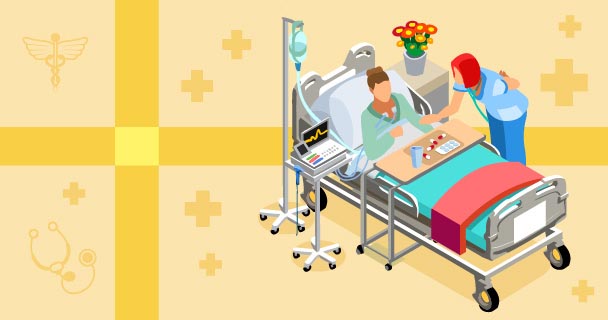






The Bedside Shift Report from the Patient’s Perspective

A Partner guest blog post by Brooke Billingsley, CEO, Task To Touch LLC
Patients spend little time thinking about the nurse's list of tasks to complete. They aren't aware of the excellent job their nurse did charting their care, how staff made sure safety precautions were adhered to, or what it took to provide a meal on time.
Patients are functioning on an entirely different level. They are focusing on what they can control—which is very little—and how external forces are making it easier or harder to achieve their goals of getting better and getting out of the hospital. What registers with patients is ‘touch'—those memorable moments in which staff make a genuine effort to connect with patients.
A positive transformation occurs in patient's perception of their care when touch is added to a task. That is certainly true with the Bedside Shift Report (BSSR).
What is a Bedside Shift Report?
The Bedside Shift Report is a structured handoff from one nurse to another during shift change and is conducted at the patient's bedside. The purpose of the BSSR is to improve quality, continuity, and patient safety while also demonstrating a commitment to patient and family-centered care.
The BSSR is often misunderstood because it is seen as time-consuming, does require effort, and for some is uncomfortable. But the BSSR must be seen from the patient's perspective to be fully appreciated. The benefits and value to the patient far outweigh the arguments against this practice.
The Benefits of a Bedside Shift Report
Consider what the patient sees when a fully functioning Bedside Shift Report is conducted:
- The BSSR allows patients to hear and physically experience how committed the organization is to their care and illustrates how unique and important their case is.
- Patients are very conscious of how staff interacts with one another through conversations and body language. The BSSR presents an opportunity to show unity and camaraderie, which patients ultimately associate with good care.
- Staff has the opportunity to give patients the assurance that they will receive the same great care from the new nurse as the previous nurse. It also increases the chance for mutual praise and promotion of the rest of the team.
- Because the Bedside Shift Report is not a patient expectation (they are not likely to say, "Hey, I think I should be in on that get together in the hallway,"); the act itself is (novel) and memorable, lending itself to increased satisfaction.
- The BSSR demonstrates that time spent with the patient has value, which in turn shows respect for patients and their participation.
- Adding some personality to the process completes the recipe for a guaranteed touch opportunity.
There are a few additional things you should consider in making the transition to a Bedside Shift Report a successful one.
- Have a plan to determine what would be most beneficial for the patient to know and work out the details of the information exchange.
- Practice until it feels comfortable. In time this should become second nature.
- Communicate in a way that is most understandable to the patient.
- If the patient is not able to participate, include family if they are present.
And finally, when you formally conclude your time with your patients, the BSSR shows that you care enough to say good-bye, adding touch to a required task.
About HealthStream's Partner, Task To Touch Learning. Learn more.
Task To Touch™ e-Learning allows employees to see what the patient sees in order to develop the emotional intelligence, communication, and acuity skills necessary to understand and alter patient perception.
